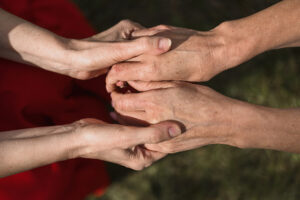Tendonitis is severe inflammation or irritation of a tendon. Tendons are fibrous cords that attach muscles to bones and their function is to facilitate the muscles to move the bones. Tendons are one of the areas that suffer the most injuries, specifically the enthesis, which is the area where the tendon joins the bone.
Although it can occur in any tendon, the most common areas to suffer from tendinitis are on the inside of the knee (anserine tendinitis), under the kneecap (patellar tendinitis), in the heel (Achilles tendinitis), the shoulder (rotator cuff), in the outer region of the forearm (known as “tennis elbow”) or in the wrist (De Quervain’s tendinitis).
SYMPTOMS OF TENDONITIS
This disorder causes pain and tenderness along the tendon, usually near the joint, and this discomfort worsens with movement or activity. Usually, this pain makes it impossible to perform certain activities of daily living.
Symptoms appear at the point of attachment of the tendon and bone. The most common are:
- Sensitivity in the affected area.
- Progressive pain, which may become sharp or intense when moving the affected joint.
- Mild swelling.
- Redness or heat radiation.
- Low functional capacity of the area.
- A low range of joint movement.
CAUSES OF TENDONITIS
Tendonitis can be caused by sudden injuries, but the main cause of this condition lies in the overuse of the tendons, due to the repeated practice of the same movement over time. They mainly occur during sports and/or work practice, due to muscular overexertion and repetitive movements.
Tendonitis may not have a single cause and may be the confluence of several. The most common are:
- Unexpected work or sports injuries.
- Repetitive movements over long periods of time.
- Alteration of posture due to incorrect posture or abnormal positions.
- Muscle overload due to excessive use of the joints.
- Tendon aging caused by age.
- Some pathologies such as arthritis, diabetes, gout, psoriasis or thyroid diseases.
RISK FACTORS
People who are most at risk for tendonitis are:
- Those who are engaged in professions involving repetitive movements, maintaining awkward postures, those who work in environments with vibrations or those who make great physical efforts.
- Those of advanced age, because age causes loss of flexibility in the tendon.
- Professional athletes or those who regularly practice a sport that involves repetitive movements.
- Those who suffer from any systemic disease.
10 TIPS TO PREVENT TENDONITIS
- If you do sports regularly, do not overdo the same exercise and combine several types or disciplines to avoid overloading the same joint.
- Strengthen muscles, as keeping them strong and flexible helps prevent injuries.
- Always warm up before exercise and, after exercise, stretch to maintain joint flexibility.
- Pay attention to the movements you make when you train or practice a sport because, if not performed correctly, you can overload the tendons.
- Pay attention to ergonomics in the workplace, both your body position and the elements you use to perform the functions.
- If you perform repetitive motions in the workplace, make sure you do them correctly.
- From time to time, take breaks so as not to load the hands, elbows, arms and shoulders.
- Pay attention to your body and take action if you begin to feel pain in any joint.
- To avoid tendonitis of the lower body, wear appropriate footwear.
- Respect the body’s resting times.





